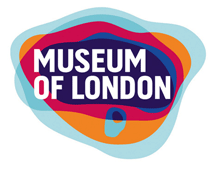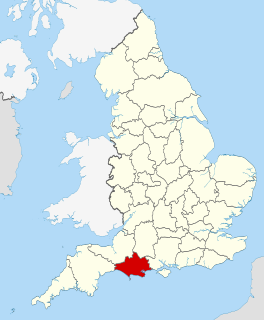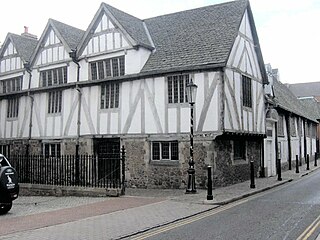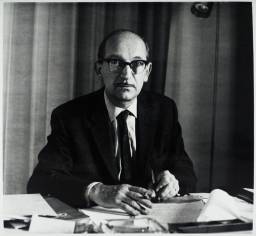Maxwell Graham Hebditch CBE FSA (born 22 August 1937) was Director of the Museum of London in London, England. [1]

The Museum of London documents the history of the UK's capital city from prehistoric to modern times and is located in the City of London on the London Wall, close to the Barbican Centre and is part of the Barbican complex of buildings created in the 1960s and 1970s to redevelop a bomb-damaged area of the City.
He was born on 22 August 1937 [2] in the Yeovil area, the son of Harold and Lily (née Bartle) Hebditch.
He was appointed the first Field Archaeologist of Leicester Museum service from 1961 to 1965, when he was made Assistant Curator of Archaeology at Bristol Museum, becoming their Curator of Agriculture and Social History in 1969. [3] In 1970 he moved to London to become Director of the Guildhall Museum and from 1977 to 1997 was director of the new Museum of London. He was also president of the UK Museums Association; and from 1977 to 1979 president of the London and Middlesex Archaeological Society.
The Museums Association (MA) is a professional membership organisation based in London for museum, gallery and heritage professionals, museums, galleries and heritage organisations, and companies that work in the museum, gallery and heritage sector of the United Kingdom. It also offers international membership.

The London and Middlesex Archaeological Society (LAMAS) is a society founded in 1855 for the study of the archaeology and local history of the City of London and the historic county of Middlesex. It also takes an interest in districts that were historically in Surrey, Kent, Essex and Hertfordshire, but that now lie within Greater London. The Society receives support from the Museum of London, and works in close association both with the Museum and with Museum of London Archaeology. It acts to some extent as an umbrella organisation to support smaller archaeological and local history societies in the Greater London area. It hosts an Annual Conference of London Archaeologists and an annual Local History Conference.
In 2000, after retiring from the Museum of London, he became honorary curator at the Philpot Museum in Lyme Regis, Dorset and was Chair of the Taunton Cultural Consortium. He now lives in Dorchester.

Lyme Regis is a town in West Dorset, England, 25 miles (40 km) west of Dorchester and 25 miles (40 km) east of Exeter. Styled "The Pearl of Dorset", it lies at Lyme Bay on the English Channel coast at the Dorset–Devon border. It is noted for fossils found in cliffs and beaches on the Heritage Coast or Jurassic Coast – a World Heritage Site. The harbour wall known as "The Cobb" appears in Jane Austen's novel Persuasion, in the John Fowles novel The French Lieutenant's Woman, and in the 1981 film of that name, which was partly shot in the town. A former mayor and MP was Admiral Sir George Somers, who founded the English colonial settlement of Somers Isles, now Bermuda, where Lyme Regis is twinned with St George's. In July 2015 Lyme Regis also joined Jamestown, Virginia in a Historic Atlantic Triangle of Lyme, St George's and Jamestown. The 2011 Census gave the parish and electoral ward a population of 3,671.

Dorset is a county in South West England on the English Channel coast. The ceremonial county comprises the unitary authority areas of Bournemouth, Christchurch and Poole and Dorset. Covering an area of 2,653 square kilometres (1,024 sq mi), Dorset borders Devon to the west, Somerset to the north-west, Wiltshire to the north-east, and Hampshire to the east. The county town is Dorchester which is in the south. After the reorganisation of local government in 1974 the county's border was extended eastward to incorporate the Hampshire towns of Bournemouth and Christchurch. Around half of the population lives in the South East Dorset conurbation, while the rest of the county is largely rural with a low population density.

Dorchester is the county town of Dorset, England. It is situated between Poole and Bridport on the A35 trunk route. A historic market town, Dorchester is on the banks of the River Frome to the south of the Dorset Downs and north of the South Dorset Ridgeway that separates the area from Weymouth, 7 miles (11 km) to the south.









